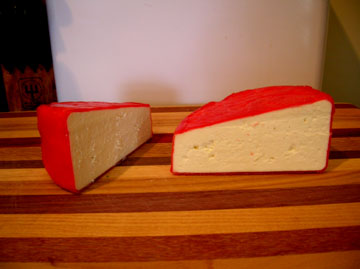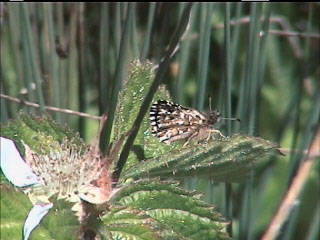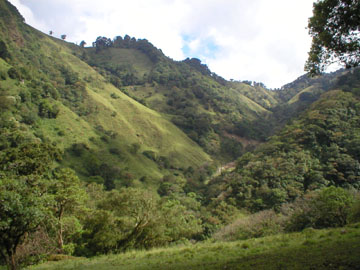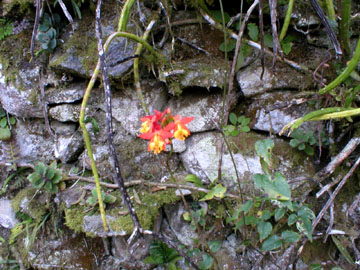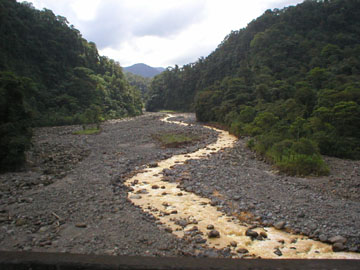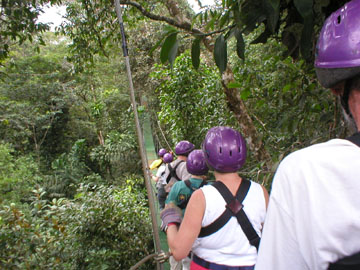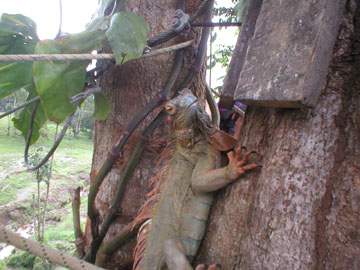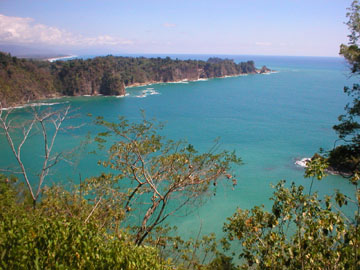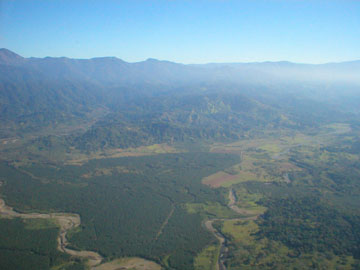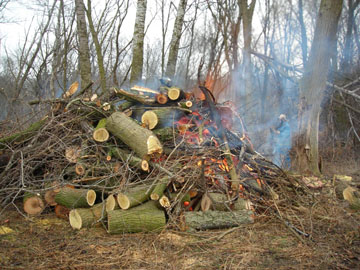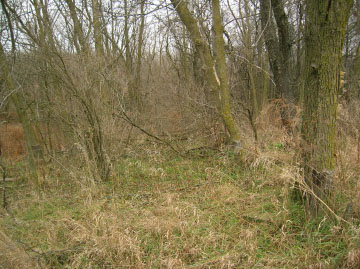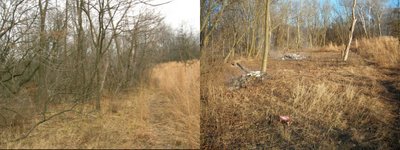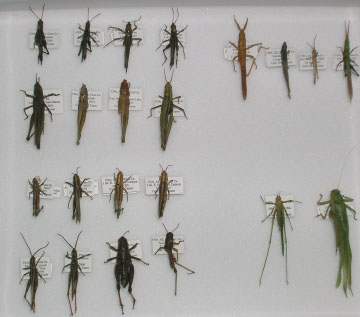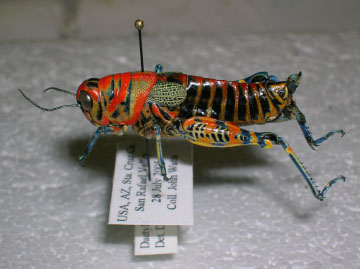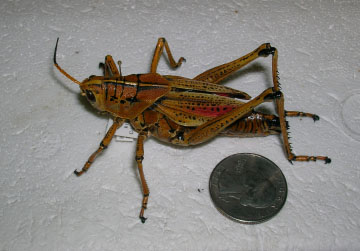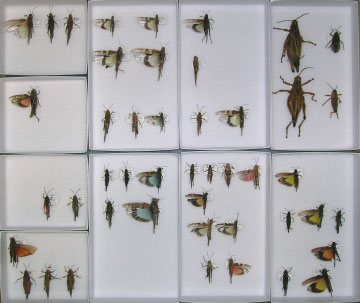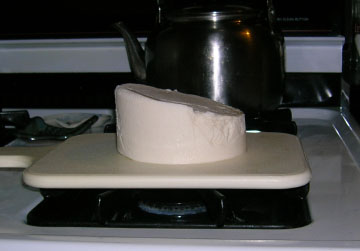Yesterday, I posted a rememberance of my first meeting with Leon, exactly 25 years ago. In celebration, and as a musing on one result of sharing a quarter century of life with someone, I today reprint an essay that I wrote several years ago. It was written shortly after the publication of the book The Intimate World of Abraham Lincoln, and is a response to a sermon that I accidentally discoverd as a result of the book.
One of the marvels of the Internet is the opportunity that it opens for serendipitous discovery. The recent suggestions that Abraham Lincoln might have been gay piqued my interest. Wanting to learn more, I ran a Google search using the search terms "Abraham Linclon" +homosexual. Among the numerous "hits" involving my intended subject was one entitled
Five-Legged Dogs, Abraham Lincoln & Same-Sex Marriage. The link connected me to the text of a sermon given by Fr. Phil Bloom of Seattle and posted on his web site
Simple Catholicism. The reference to Honest Abe had nothing to do with speculations about the Great Emancipator’s sexual orientation, but rather referred to an anecdote that Bloom attributed to him:
Abraham Lincoln posed this question: "How many legs does a dog have?" The reply of course was four.
Lincoln asked, "If we call the tail a leg, then how many legs does a dog have?" The reply: Five.
"No," Lincoln said, "Just because you call a tail a leg doesn’t make it so."
The anecdote was intended to convey an analogous concept regarding same sex marriage: just because you call it marriage doesn’t make it so.
On the surface, Fr. Bloom appears, from a Catholic perspective, neither radical, nor unorthodox in his treatment of the subject (though his- admittedly unrelated- maunderings on evolution suggest tendency to venture beyond the mainstream of church teaching on some issues). Indeed, some of his statements on the subject verge on the conciliatory:
…few people would want to limit legal arrangements [between same-sex couples] (inheritance, hospital visitation, etc.)…
Surface appearances can be deceptive, however. Within the framework of Catholic teaching, marriage is by definition a sacred relationship between one man and one woman. Fair enough- the Catholic Church is free to define its sacraments according to its own revelation. Unfortunately, Fr. Bloom is not content to let it stand at that.
Part of the problem is entirely predictable. As a non-religious person, I object to the fact that people like Fr. Bloom wish to have their religious definitions of marriage codified into the law of the land for Catholic and non-Catholic, Christian and non-Christian, religious and secular alike. This, however, is old stuff. My real objection to Fr. Bloom’s sermon arises when he mischaracterises same-sex couples in a manner that both trivializes their relationships insultingly and causes him to fall victim to the same logical flaw that he accuses proponents of same-sex marriage of committing. He does so be relegating same-sex couples to the status of "friends."
I am referring to the attempt to take the friendship between two men or two women and call it "marriage." Now, to celebrate friendship is obviously a good thing…
…However, there is a problem if we try to put friendship on the same legal level as marriage…
…They not only want to call their friendship "marriage," but to force you and me to do the same.
Pointedly, at no point in the sermon does Bloom use the term "couple" in discussing same sex relationships. His only reference to love is to decry "the ersoion of the chaste love of freindship" by same-sex couples. That’s right, not only are gay couples merely friends, if they are sexually active together they are friends in a manner that erodes love (mechanism unspecified).
The problem is particularly insidious because to argue against it can be construed as arguing against friendship as a component of marriage. Clearly, strong couples, both heterosexual and same-sex, appropriately recognize the important role that friendship plays in their unions. My argument here is not that my husband is not my friend- far from it- but that the word friend is, in and of itself, grossly inadequate to describe who we are to one another.
After reading the sermon, I mentioned it to my husband. We pondered the ways in which friendship is an inadequate descriptor for our love. In some ways, the question is challenging. Many of the differences between our marriage and friendship are differences of degree rather than of kind. For example, when we have had the occasion to make difficult career choices in order to stay together geographically we have expressed something deeper than what is found in a typical friendship. Yet that decision resides on the same continuum as decisions to accept minor inconvieniences and make small sacrifices for the benefit of other people who matter to us.
Perhaps the main difference in kind between our love and friendship is one of exclusivity. Over the past twenty-odd years, our lives together have become intertwined on numerous levels: emotionally, financially, spiritually, sexually and socially. There is simply no room for another friend of this magnitude in my life. We can be confident that our love will always be there, in part because we share it with no one else. Part of the joy of our life together is that in the continual ebb and flow of our existance as individuals we become one who is greater than the sum of both of us. Sound familiar?
One enlightening tool that can be brought to bear on the "are we just friends?" question is the Social Readjustment Rating Scale (SRRS) devised by psychologists Thomas Holmes and Richard Rahe in 1967. A sort of emotional Richter scale, the SRRS describes the relative impacts that major- and not so major- life events elicit. Death of a spouse rates highest on the scale at 100. Near the low end, going on vacation gets a 13. The top three items on the list all involve ending marriages: death of a spouse, divorce, and separation from a spouse. Death of a close friend ranks 17th- behind deaths of family members, but also behind things like getting fired, business readjustment, and sexual difficulties. The scale is a helpful tool for analyzing the question at hand.
Loss of Leon, my husband, would be the one single most significant, heartbreaking, and traumatic event of my life- because it would be like losing part of myself. Without a doubt, it ranks ahead of loss and death involving other close family members- as painful as those would be (and have been). Would it rank 100, the equivalent of the loss of a presumably heterosexual spouse? Such a question can never be answered in detail. My guess is that people experience as much variation in the emotional impact of the loss of an opposite-sex spouse as they do to the loss of a same-sex spouse. I seriously doubt that any heterosexual individual could answer the same question in detail. What is clear is that loss of Leon would occupy the exact same position where the SRSS places loss of a spouse - right at the top.
Just as calling the dog’s tail a fifth leg doesn’t make it so, calling committed couples simply friends doesn’t make it so either. The SRRS readily distinguishes the love of a spouse from the love of friends. Unlike Fr. Bloom’s sermon, this comparative approach appropriately reflects the depth of love and commitment shared by couples of all persuasions, a love that people like Fr. Bloom try to deny through the language of diminution. To distinguish friendship from the love of a spouse does no disservice to the love of friends. To conflate them does a severe disservice to marriage- same sex or otherwise. And to base the civil law of the land on this conflation will bring untold suffering to the countless committed and loving families that just happen to include same-sex couples.
Labels: Gay, Politics
